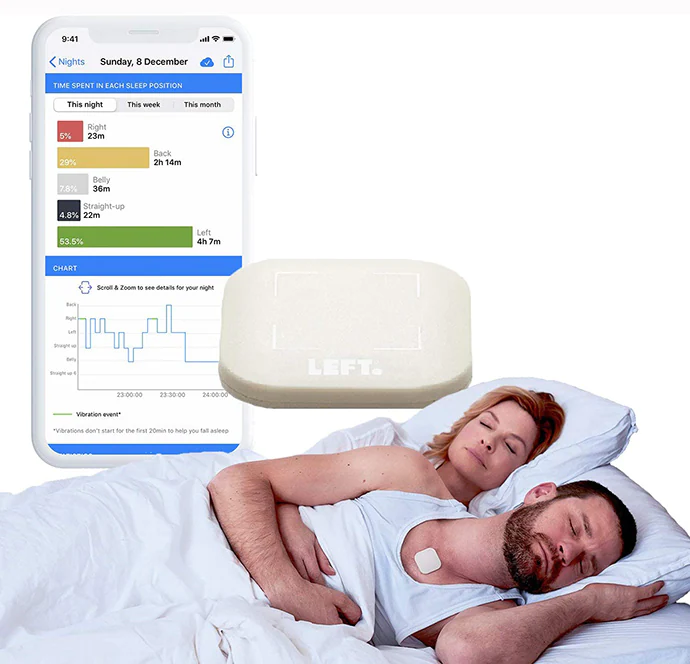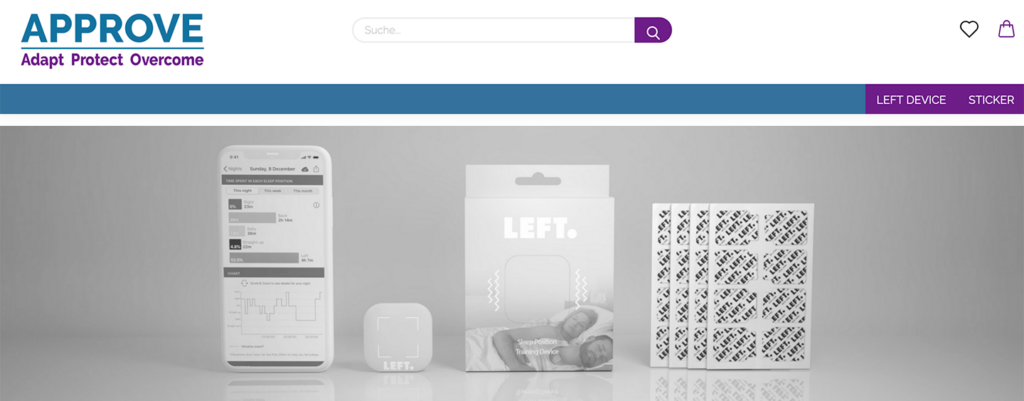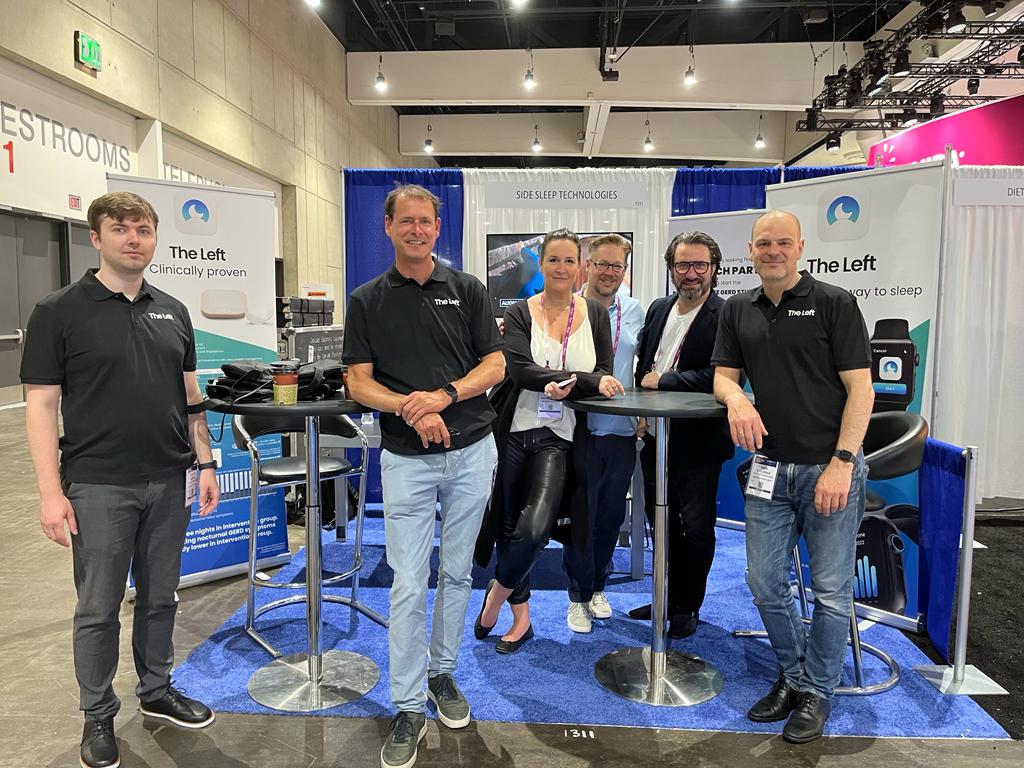Written by Marcia Frellick
Source: https://www.medscape.com/viewarticle/971286
A vibrating wearable device helped people with gastroesophageal reflux disease (GERD) stay positioned on their left side while sleeping, alleviating nighttime reflux symptoms compared with sham treatment, a small, randomized study suggests.
People often report having more reflux symptoms when sleeping on their right side, and experimental studies suggest that sleeping on the right side is associated with higher esophageal acid exposure time and slower esophageal acid clearance compared with sleeping on the left side, the authors wrote.
They cite a possible cause as the stomach being above the esophagus when a person is sleeping on their right side, resulting in more reflux.
Dr Arjan Bredenoord
“There are two very exciting new things that can be learned,” Arjan Bredenoord, MD, PhD, a principal investigator of the study and professor of neurogastroenterology and motility at the Academic Medical Center in Amsterdam, the Netherlands, told Medscape Medical News. “First, we show that a device that trains people to sleep on the left side really helps to relieve nocturnal reflux symptoms. Second, the study was performed completely remotely, with the patients being at home.
“The devices were shipped to the patients. All contact was via video calling, and questionnaires were done via links in emails that were linked to secure databases to store the patients’ symptom responses,” he added.
The findings were published online in Clinical Gastroenterology and Hepatology.

A Study in Sleep Positional Therapy
Researchers performed a double-blind, randomized, sham-controlled trial in 100 patients with nighttime GERD symptoms who wore a programmed device (about 1.5 inches square) on their chest, midsternum.
Patients were advised to sleep on their left side and randomly assigned (1:1) either to a group whose device produced a gentle vibration when they flipped onto their right side throughout sleep or to the group whose device vibrated when they flipped to the right side but only for the first 20 minutes of use (the sham intervention).
The primary outcome for success was at least a 50% reduction in the Nocturnal Gastroesophageal Reflux Disease Symptom Severity and Impact Questionnaire (N-GSSIQ) score. Secondary outcomes included change in sleep position and reflux symptoms.
In the intention-to-treat analysis, the rate of treatment success was 44% in the intervention group vs 24% in the sham group. The risk difference was 20% (95% CI, 1.8% to 38.2%; P = .03).
Treatment led to a significant avoidance of sleeping on the right side (intervention 2.2% vs sham 23.5%; P ≤ .0001) and an increased time of sleeping on the left side (intervention 60.9% vs sham 38.5%; P ≤ .0001).
Patients in the intervention group also had more reflux-free nights (9 nights vs 6 nights for the sham group).
After 2 weeks of treatment, the average total N-GSSIQ scores were lower in the active device group (18.8 vs 23.7 in the sham group; P = .04).
Most With GERD Have Nighttime Symptoms
The authors pointed out that up to 80% of patients with GERD experience symptoms during the night, such as heartburn and regurgitation, which can significantly impair sleep quality and daytime functioning.
Solutions are of high interest because current measures have shortcomings.
Raising the head-end of the bed and lengthening the time between dinner and bedtime have limited effect, the authors explained. And while proton pump inhibitors are very effective for daytime symptoms, they have limited efficacy for nighttime reflux symptoms.
Antireflux pillows, which are designed to keep patients on their left side through the night, have been found to result in less recumbent acid exposure and less self-reported nighttime reflux symptoms, but they do not allow for spontaneous body movements and can be uncomfortable, they explained.
The lightweight vibration device, made by Side Sleep Technologies BV, registers the sleep position of a subject at 30-second intervals. It categorizes sleep position as supine, right, left, prone, or upright.
Michiel Allessie, CEO of Side Sleep Technologies, told Medscape Medical News that the wearable V1.0 is sold as a consumer electronic device rather than a medical device in the United Kingdom for £99. He said the company expects to sell the V1.0 in the United States starting in June, with a target price of $99.
Promising But Device Still Needs Real-World Testing
When asked to comment, Philip Katz, MD, a gastroenterologist at Weill Cornell Medicine in New York City, said it was a fantastic study scientifically and academically incredibly interesting, but the device is not a panacea.
Katz said he will remain skeptical until the device is tested in real life, and added that it’s important to remember this is one study with 100 people.
He also wondered whether there might be an even better solution in a well-designed wedge, for example, and whether the buzzing of this product might affect sleep quality. If so, would that be worth the tradeoff?
Katz noted that busy physicians may not have the time to determine whether patients truly have nocturnal GERD or just similar symptoms. This study included people who were carefully screened by the researchers for nocturnal reflux symptoms, he pointed out.
Based on this study, Katz said he would tell patients, “You have a 50% chance to be helped because their primary outcome was met by 44%.”
He said the decision is up to the patients and comes down to this: “It’s better than nothing for sure. Is it worth $100? You tell me.”
Bredenoord said the next step is a study using pH-impedance monitoring of the esophagus to show that there is also an effect on reflux episodes.
The investigational medical devices were provided free of charge and without restrictions by Side Sleep Technologies BV. Bredenoord disclosed research funding from Nutricia, Norgine, SST, Thelial, and Bayer; speaker and/or consulting fees from Laborie, EsoCap, Medtronic, Dr. Falk Pharma, Calypso Biotech, Alimentiv, Reckett Benkiser, Regeneron, and AstraZeneca; and previously owned shares in Side Sleep Technologies BV. Another coauthor received research funding from Boston Scientific and speaker and/or consulting fees from Cook and Olympus. The remaining authors have disclosed no relevant financial relationships. Katz reported being a consultant for Phathom Pharmaceuticals and Sebela.
Clin Gastroenterol Hepatol. 2022;S1542-3565(22)00247-6. Full text
Marcia Frellick is a freelance journalist based in Chicago. She has previously written for the Chicago Tribune, Science News, and Nurse.com, and was an editor at the Chicago Sun-Times, the Cincinnati Enquirer, and the St. Cloud (Minnesota) Times. Follow her on Twitter at @mfrellick.



